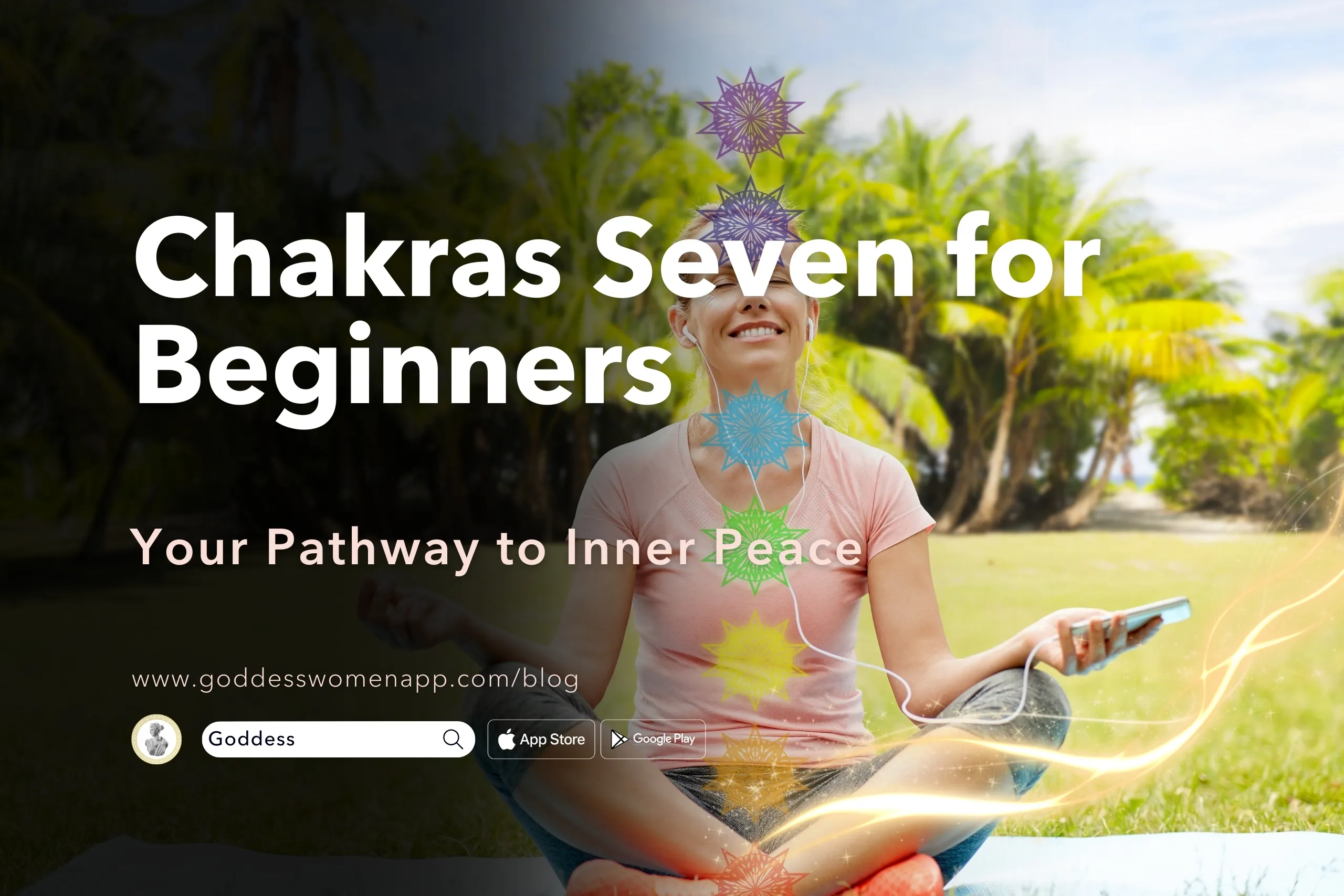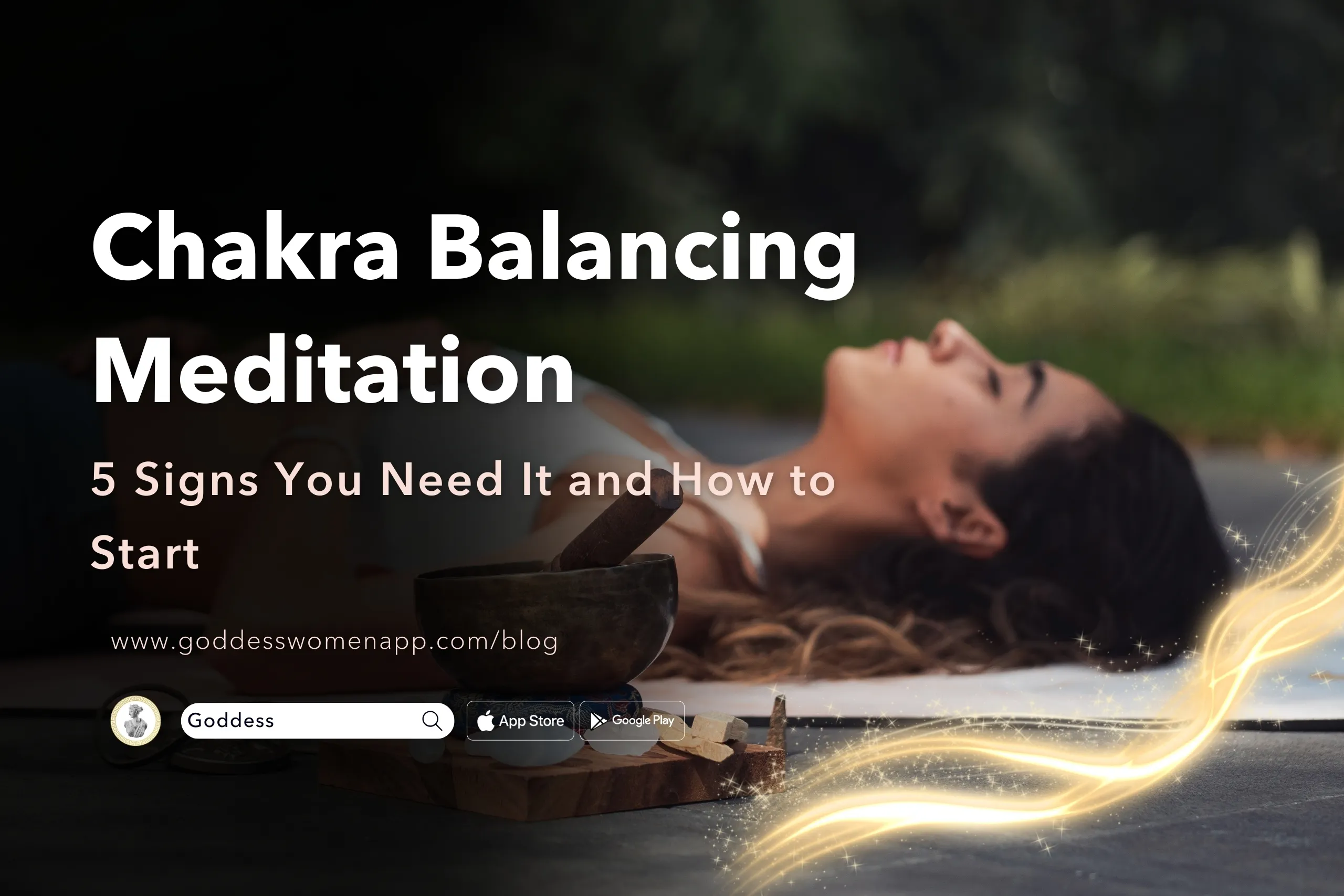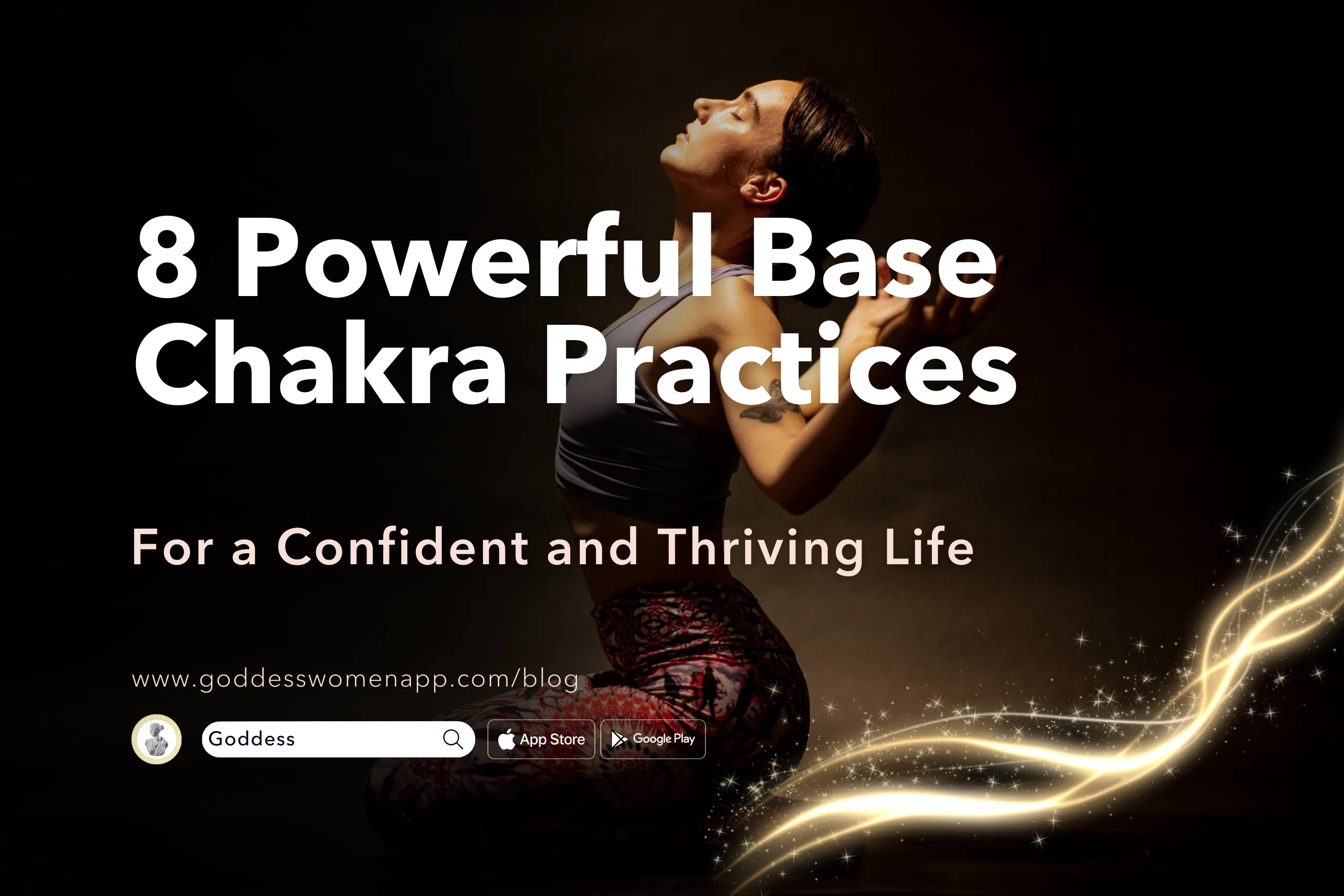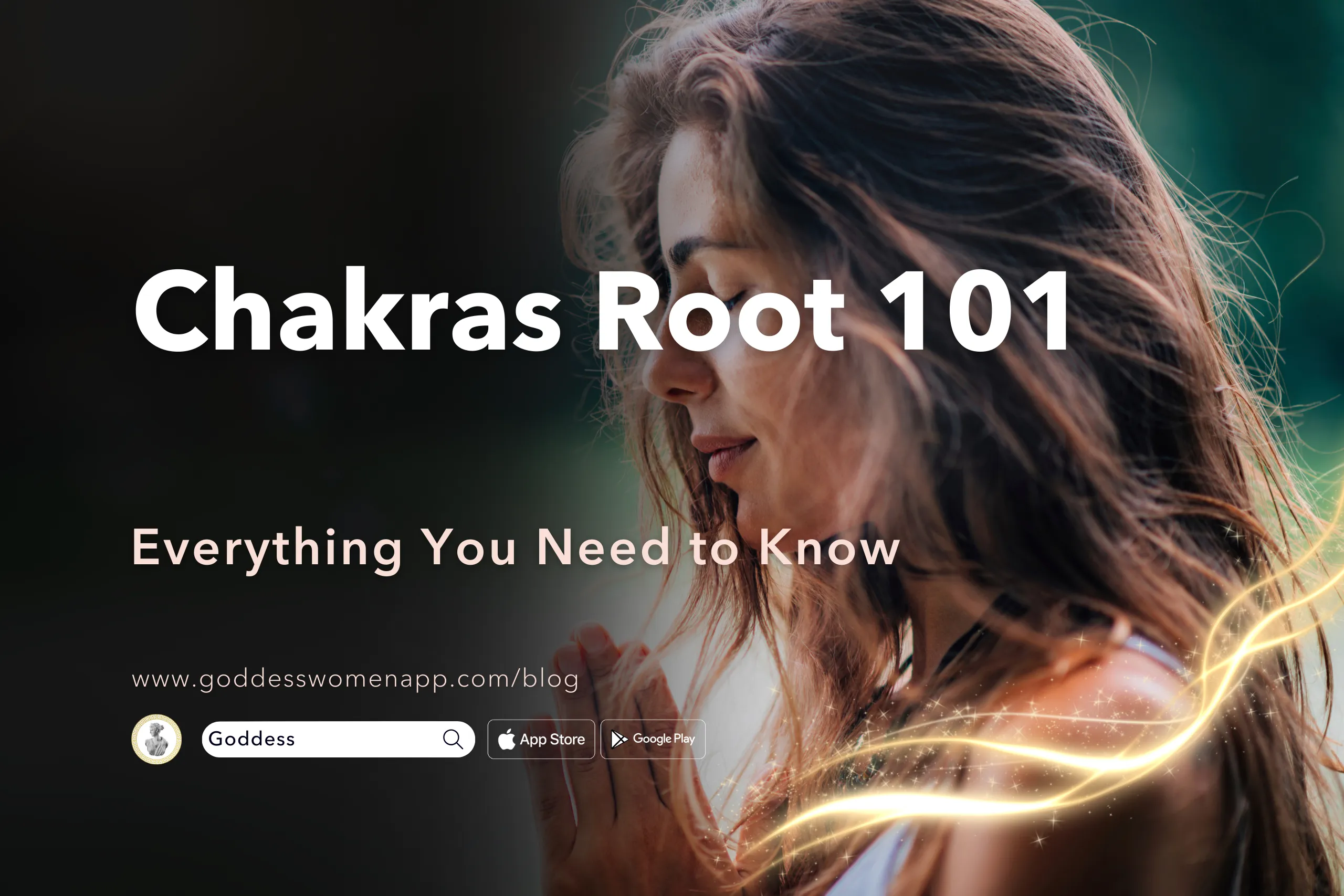Welcome to the fascinating world of chakras seven! If you’ve ever felt out of sync, stressed, or simply curious about how the ancient energy system can influence your well-being, you’re in the right place. The seven chakras are the key energy centers in the human body that affect our physical health, emotional stability, and spiritual growth.
Understanding these seven main chakras—root chakra, sacral chakra, solar plexus chakra, heart chakra, throat chakra, third eye chakra, and crown chakra—can help you achieve inner peace and balance. In this guide, we’ll explore what chakras are, delve into each of the seven main chakras, and learn how to harness their power for a harmonious life.
What Are Chakras?
Chakras are the energy centers in our bodies that regulate the flow of life energy, also known as prana or chi. Originating from ancient Indian traditions, particularly ayurvedic medicine, the chakra system forms a crucial part of our energetic body. Each of the seven chakras corresponds to specific physical, emotional, and spiritual aspects of our being.
The root chakra (muladhara chakra) is located at the base of the spine and is associated with our sense of security and survival. The sacral chakra (second chakra) in the pelvic area governs our sexual energy and creativity. The solar plexus chakra (manipura chakra), situated in the stomach region, influences our personal power and self-confidence.
Moving up, the heart chakra (anahata chakra) in the chest area is linked to love and compassion. The throat chakra (vishuddha chakra) affects communication and self-expression. The third eye chakra (ajna chakra), located between the eyebrows, is connected to intuition and insight. Finally, the crown chakra (seventh chakra) at the crown of the head represents our connection to divine energy and spiritual liberation.
When these chakras are balanced, energy flows freely through the body, promoting physical well-being and emotional health. However, blocked chakras can lead to various issues, such as high blood pressure, emotional imbalance, and a lack of self-esteem. Understanding and maintaining the balance of your chakras is essential for overall well-being.
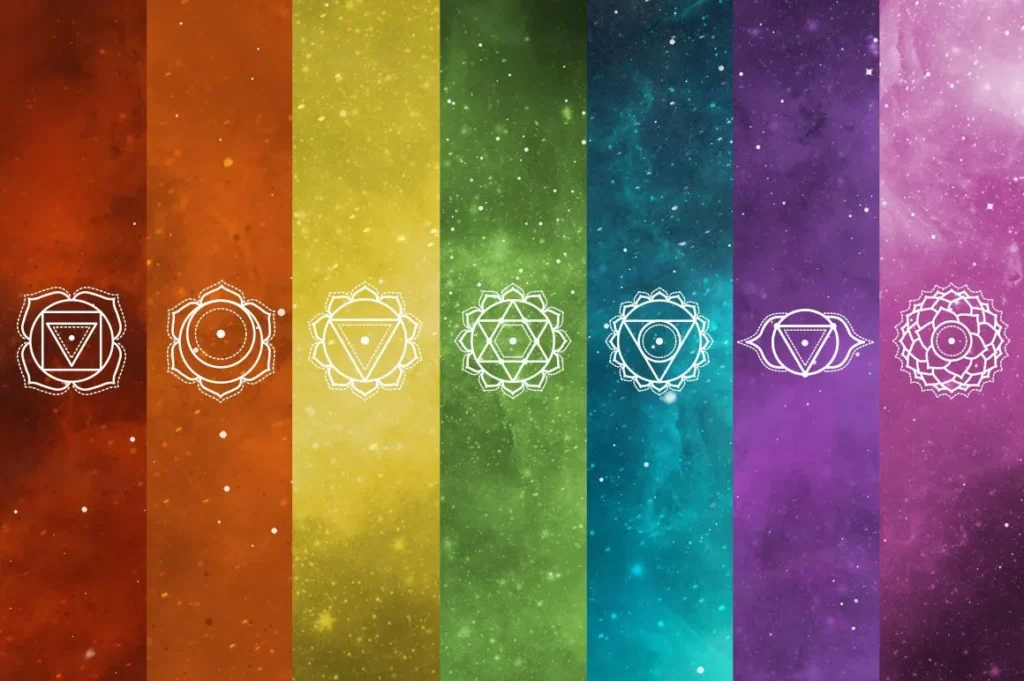
The Chakras Seven Explained
1. Root Chakra (Muladhara)
– Location: Base of the spine
– Color: Red
– Associated Qualities: Security, survival, grounding
– Signs of Imbalance: Feeling unsafe, financial instability, physical health issues
– Balancing Techniques: Grounding exercises, asana practice, connecting with nature
Read more about:
2. Sacral Chakra (Svadhisthana)
– Location: Pelvic area
– Color: Orange
– Associated Qualities: Creativity, sexual energy, emotional health
– Signs of Imbalance: Creative blocks, sexual dysfunction, emotional instability
– Balancing Techniques: Creative activities, pelvic floor exercises, emotional release practices
3. Solar Plexus Chakra (Manipura)
– Location: Stomach region
– Color: Yellow
– Associated Qualities: Personal power, self-confidence, self-esteem
– Signs of Imbalance: Low self-esteem, lack of control, digestive issues
– Balancing Techniques: Breathing exercises, fire element practices, self-confidence building activities
Read more about:
4. Heart Chakra (Anahata)
– Location: Center of the chest
– Color: Green
– Associated Qualities: Love, compassion, connection
– Signs of Imbalance: Difficulty in relationships, emotional detachment, blocked heart chakra
– Balancing Techniques: Heart-opening yoga poses, acts of kindness, emotional healing practices
5. Throat Chakra (Vishuddha)
– Location: Throat region
– Color: Blue
– Associated Qualities: Communication, self-expression, truth
– Signs of Imbalance: Difficulty expressing oneself, blocked throat chakra, sore throat
– Balancing Techniques: Singing, journaling, speaking your truth
6. Third Eye Chakra (Ajna)
– Location: Between the eyebrows
– Color: Indigo
– Associated Qualities: Intuition, insight, vision
– Signs of Imbalance: Lack of intuition, headaches, vision problems
– Balancing Techniques: Meditation, visualization exercises, intuitive development practices
7. Crown Chakra (Sahasrara)
– Location: Crown of the head
– Color: Violet or white
– Associated Qualities: Spiritual connection, enlightenment, divine energy
– Signs of Imbalance: Feeling disconnected from spirit, blocked crown chakra, lack of purpose
– Balancing Techniques: Chakra meditation, spiritual practices, connecting with higher consciousness
Understanding and balancing these seven chakras can profoundly affect your mental health, emotional balance, and overall well-being. Each chakra relates to different aspects of our life and requires specific practices to maintain their harmony. Whether through yoga, meditation, or other holistic approaches, integrating chakra practices into your daily routine can lead to a more balanced and fulfilling life.
In the next sections, we will delve deeper into how to balance your chakras, the signs of imbalanced chakras, and the benefits of maintaining a healthy chakra system. Stay tuned for more insights into achieving inner peace through the chakras seven.
How to Balance Your Chakras?
Balancing the chakras seven is essential for maintaining the harmonious flow of energy through the human body. Each of the seven main chakras requires specific techniques to unblock and balance them, ensuring optimal physical health, emotional stability, and spiritual well-being.
With Goddess, balance all your chakras seven for personal empowerment and trust in your life. By incorporating practices, overcome your shadow sides, have the courage to know yourself and improve your life in all aspects.
Try Goddess for 7 days free and explore these practices to create harmony and feel empowered in your daily life, connecting deeply with your inner strength and building a solid foundation for a happier and healthier life.

Root Chakra (Muladhara)
– Balancing Techniques: Grounding exercises such as walking barefoot on grass, practicing yoga poses like Mountain Pose and Warrior Pose, and incorporating red foods like beets and tomatoes into your diet.
– Breathing Exercises: Deep abdominal breathing to stimulate the lower chakras.
– Focus: Cultivate a sense of security and stability.
Sacral Chakra (Svadhisthana)
– Balancing Techniques: Engage in creative activities, practice pelvic floor exercises, and enjoy water-based activities like swimming.
– Breathing Exercises: Rhythmic breathing to enhance the flow of sexual energy and creativity.
– Focus: Embrace pleasure and emotional health.
Solar Plexus Chakra (Manipura)
– Balancing Techniques: Practice yoga poses like Boat Pose and Sun Salutations, engage in activities that boost self-confidence, and incorporate yellow foods like bananas and corn into your diet.
– Breathing Exercises: Fire breath (Kapalabhati) to ignite personal power.
– Focus: Strengthen self-esteem and assertiveness.
Heart Chakra (Anahata)
– Balancing Techniques: Perform heart-opening yoga poses such as Camel Pose and Bridge Pose, practice acts of kindness, and consume green foods like spinach and kale.
– Breathing Exercises: Heart-focused breathing to foster love and compassion.
– Focus: Enhance emotional health and connection.
Throat Chakra (Vishuddha)
– Balancing Techniques: Sing, journal, and practice yoga poses like Shoulder Stand and Fish Pose to promote a balanced throat chakra.
– Breathing Exercises: Ujjayi breath (ocean breath) to support clear communication.
– Focus: Express your truth and creativity.
Third Eye Chakra (Ajna)
– Balancing Techniques: Meditate regularly, practice visualization exercises, and include indigo-colored foods like blueberries in your diet.
– Breathing Exercises: Alternate nostril breathing to activate the pineal gland.
– Focus: Develop intuitive knowledge and insight.
Crown Chakra (Sahasrara)
– Balancing Techniques: Engage in chakra meditation, connect with nature, and consume foods that support the nervous system like nuts and seeds.
– Breathing Exercises: Silent meditation with deep, slow breaths to connect with divine energy.
– Focus: Achieve spiritual liberation and enlightenment.
Signs Your Chakras Are Out of Balance
Recognizing the signs of imbalanced chakras is crucial for maintaining a healthy energy flow throughout the chakra system. Each chakra relates to specific symptoms when blocked or overactive.
Root Chakra
– Signs of Imbalance: Feeling unsafe, financial instability, lower back pain, high blood pressure.
– Blocked Root Chakra: Difficulty grounding oneself and experiencing fear and anxiety.
Sacral Chakra
– Signs of Imbalance: Creative blocks, sexual dysfunction, emotional instability, pelvic pain.
– Blocked Sacral Chakra: Inhibited sexual energy and suppressed emotions.
Solar Plexus Chakra
– Signs of Imbalance: Low self-esteem, lack of control, digestive issues.
– Blocked Solar Plexus Chakra: Feeling powerless and experiencing stomach problems.
Heart Chakra
– Signs of Imbalance: Difficulty in relationships, emotional detachment, heart issues.
– Blocked Heart Chakra: Inability to give or receive love and emotional coldness.
Throat Chakra
– Signs of Imbalance: Difficulty expressing oneself, sore throat, neck pain.
– Blocked Throat Chakra: Suppressed communication and creativity.
Third Eye Chakra
– Signs of Imbalance: Lack of intuition, headaches, vision problems.
– Blocked Third Eye Chakra: Inability to trust inner guidance and frequent headaches.
Crown Chakra
– Signs of Imbalance: Feeling disconnected from spirit, lack of purpose, chronic fatigue.
– Blocked Crown Chakra: Spiritual disconnection and confusion.
Benefits of Balanced Chakras
Maintaining balanced chakras is vital for overall well-being. When the seven main chakras are in harmony, the energy centers promote physical health, emotional stability, and spiritual growth.
– Physical Health: Balanced chakras influence health by supporting the nervous system and physical body, reducing high blood pressure, and enhancing physical well-being.
– Emotional Stability: Harmonious chakras lead to emotional health, preventing emotional imbalance and promoting a sense of inner peace.
– Spiritual Growth: A balanced crown chakra fosters spiritual liberation and connection to divine energy, enhancing intuitive knowledge and personal growth.
– Mental Clarity: Clear and balanced energy centers support mental health, providing clarity, focus, and improved decision-making.
– Enhanced Relationships: A balanced heart chakra ensures healthy relationships, fostering love, compassion, and deep connections with others.
– Personal Empowerment: An aligned solar plexus chakra boosts self-confidence and personal power, enabling one to assert themselves effectively.

Conclusion
Understanding and balancing the chakras seven is a transformative journey towards inner peace and holistic well-being. Each of the seven main chakras plays a vital role in our physical body, emotional health, and spiritual growth. By learning to recognize signs of imbalance and practicing specific techniques to unblock chakras, we can ensure a harmonious energy flow throughout our chakra system. Embrace the ancient energy system of the chakras, and you’ll find yourself on a path to greater self-knowledge, emotional stability, and spiritual liberation. Start your journey today with chakra meditation, yoga practices, and a mindful approach to balancing your energy centers for a life filled with peace and vitality.
Read more about:
Chakras Solar Plexus: The Ultimate Guide to Personal Power and Self-Esteem
